Data for the 87 Twins-Raised-Apart Pairs
Here is the follow-up to my earlier Substack post "Do Twins-Raised-Apart IQ Studies Prove Nature Over Nurture?"
Below are the screenshots of the summaries of IQs and schooling for the 87 pairs of identical twins raised apart that appear in Acta Psychologica, July 2025:
Jared C. Horvath and Katie Fabricant
I’ve responded to this article at some length in my previous Substack post:
Substack has a limit on how big of an email you can send out so I had to split this into two emails.
Some observations:
Many of these pairs were not as apart as you might assume. Of the 87 pairs, 26 (30%) attended the same school for at least part of their educational careers.
Probably the most valuable datapoints are 71 and 72. They are the two sets of Colombian twins described by Nancy Segal who got switched in the maternity award and each pair grew up thinking they were fraternal twins. One inadvertently mixed pair grew up in a rural town while the other mixed pair grew up in the big city. Neither knew of the existence of their identical twins. As young adults all four lived in Bogota, where they were reunited by friends of their twins stopping them on the street to converse with their look-alikes.
The capital city mixed pair each got 16 years of schooling and the the village mixed pair got only 5 years. It looks like one City Mouse outscored his Country Mouse twin by 22 points and the other by 7 for an average difference of 14.5 points.
Granted, that’s a tiny sample size, but it’s an incredibly elegant experimental design (except for not being designed at all and happening only through hospital incompetence).
Note that there are some obvious typos, such as both the first and second pairs of Colombian twins being referred to as A and B instead of A, B, C, and D.
You can read a lot more about the implications of this dataset in my earlier Substack post.


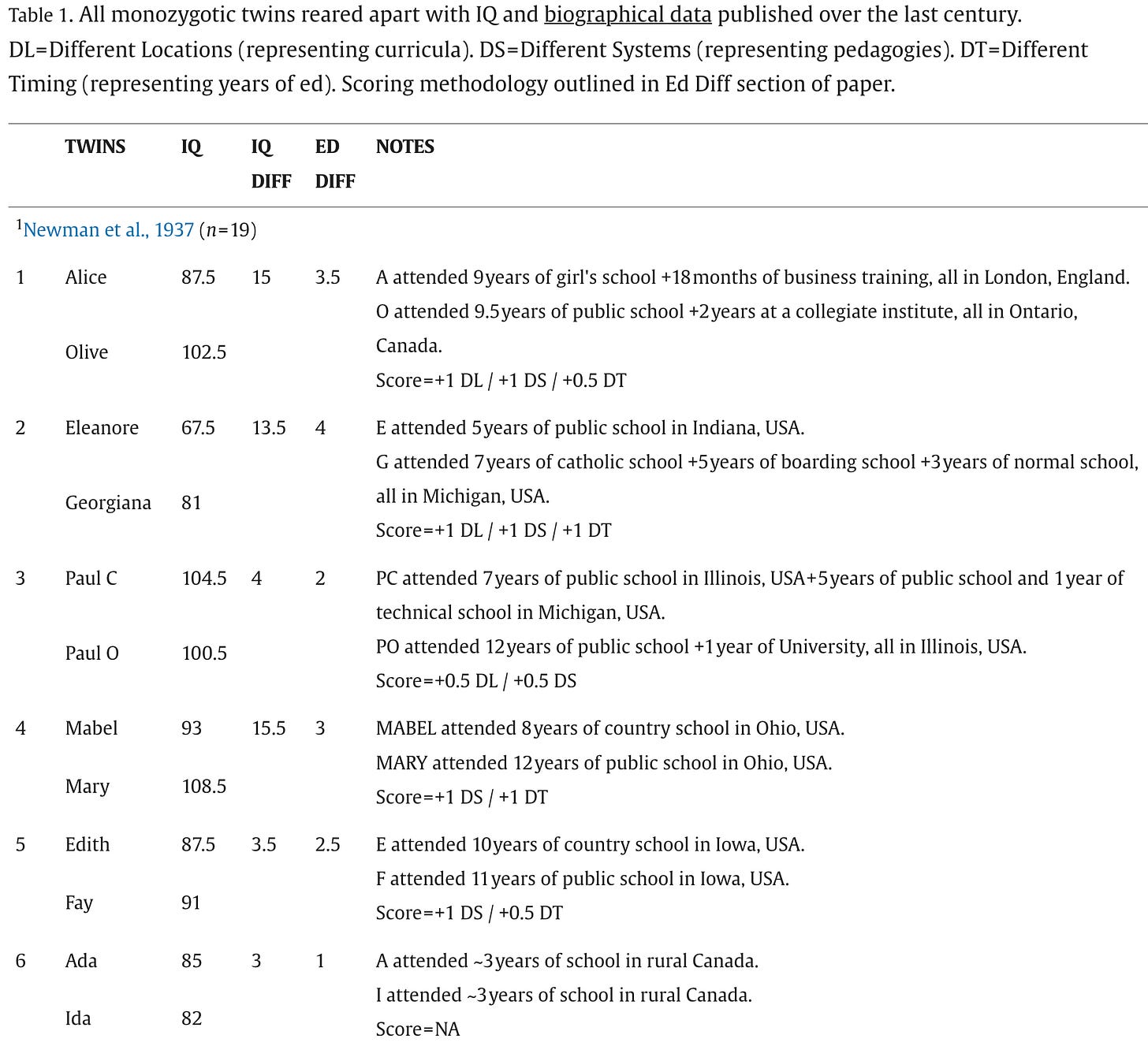
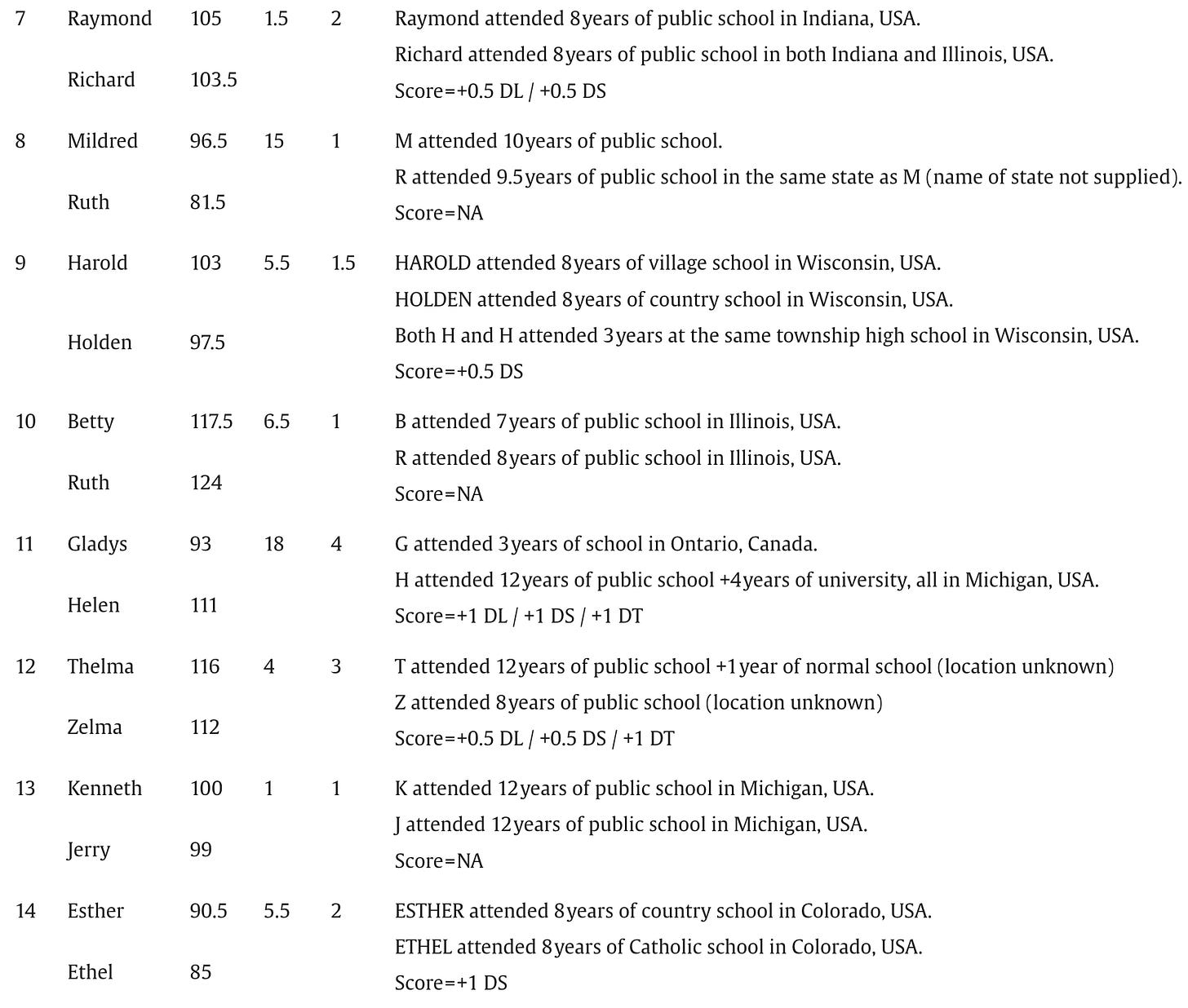
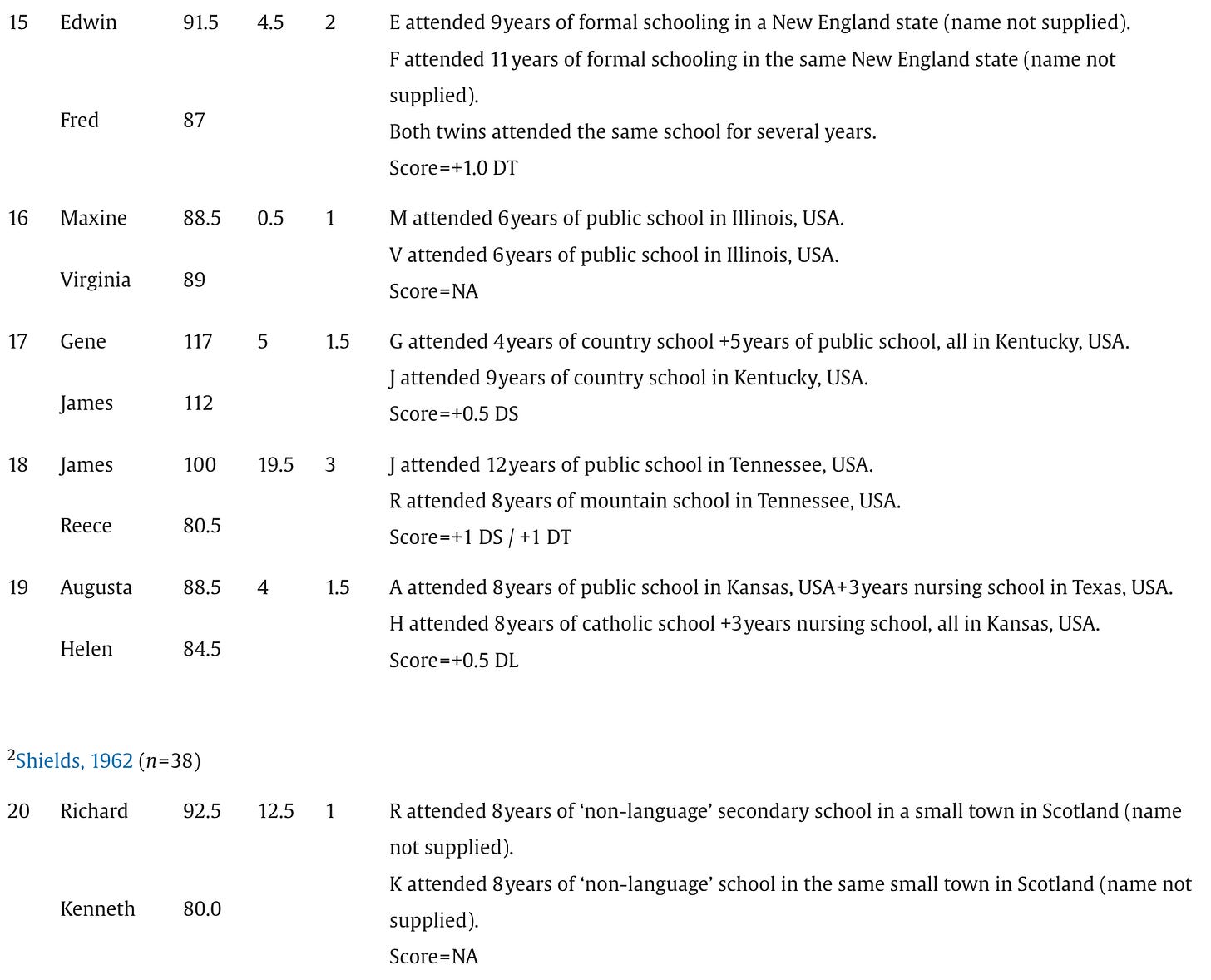
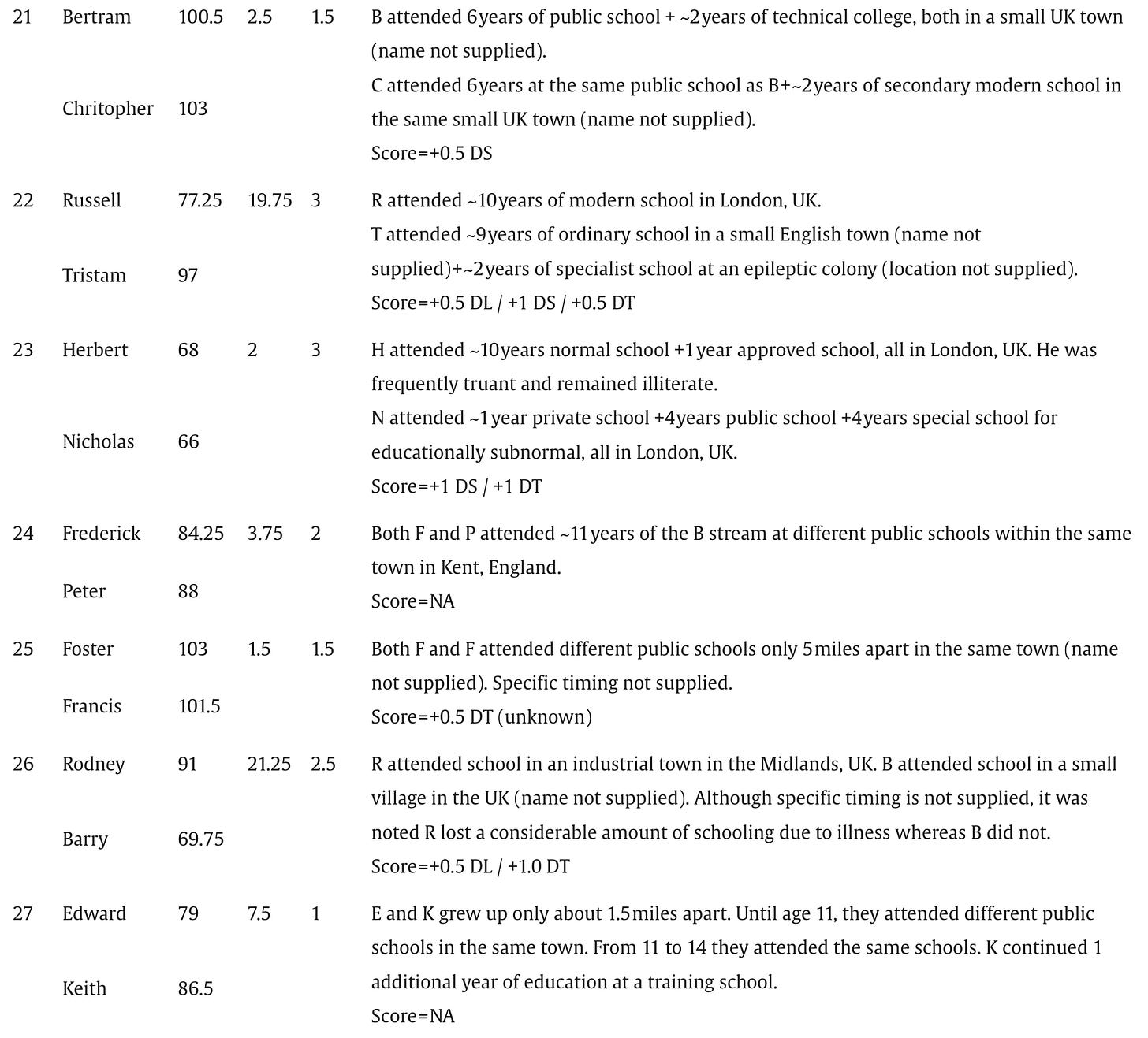
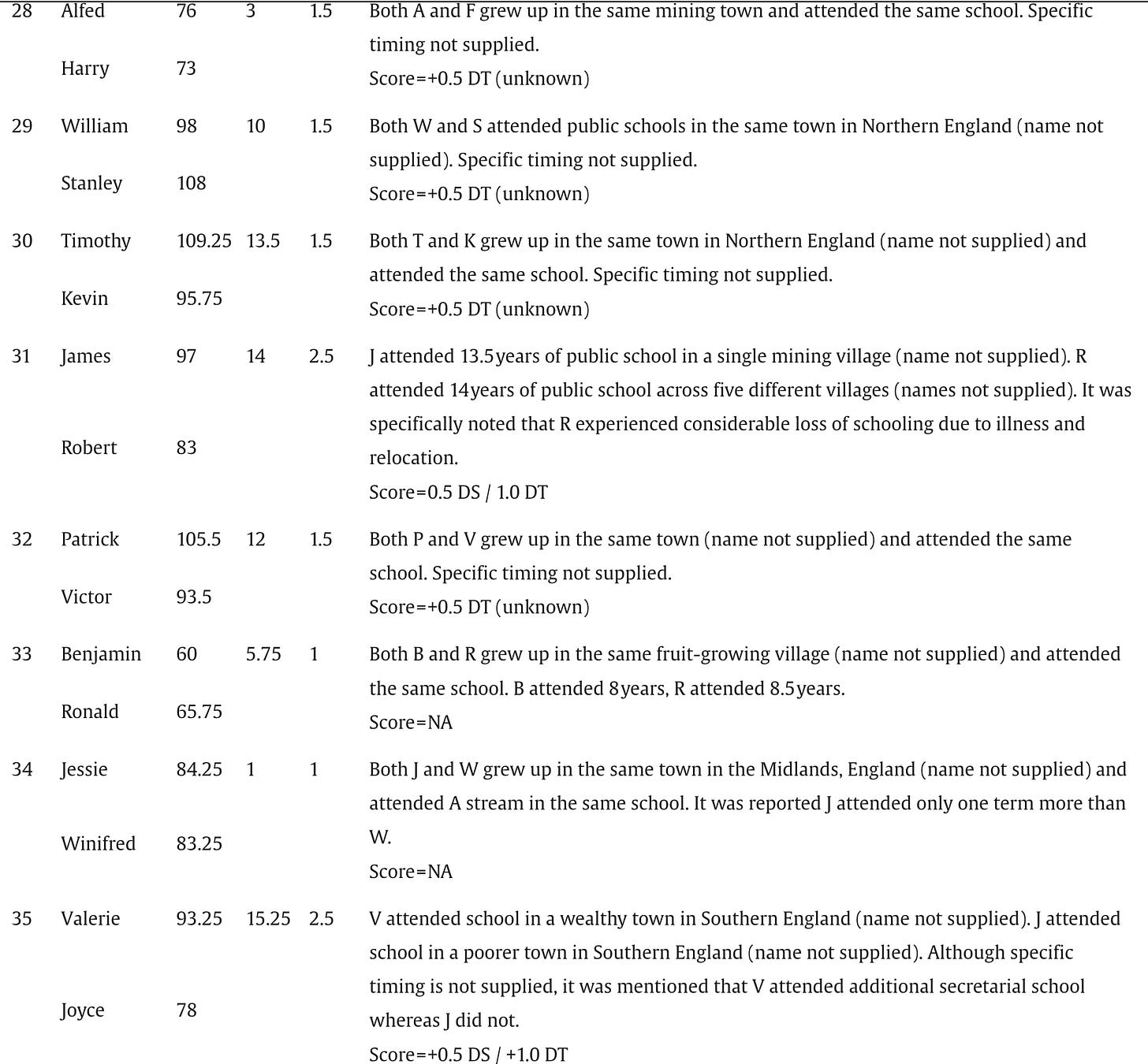
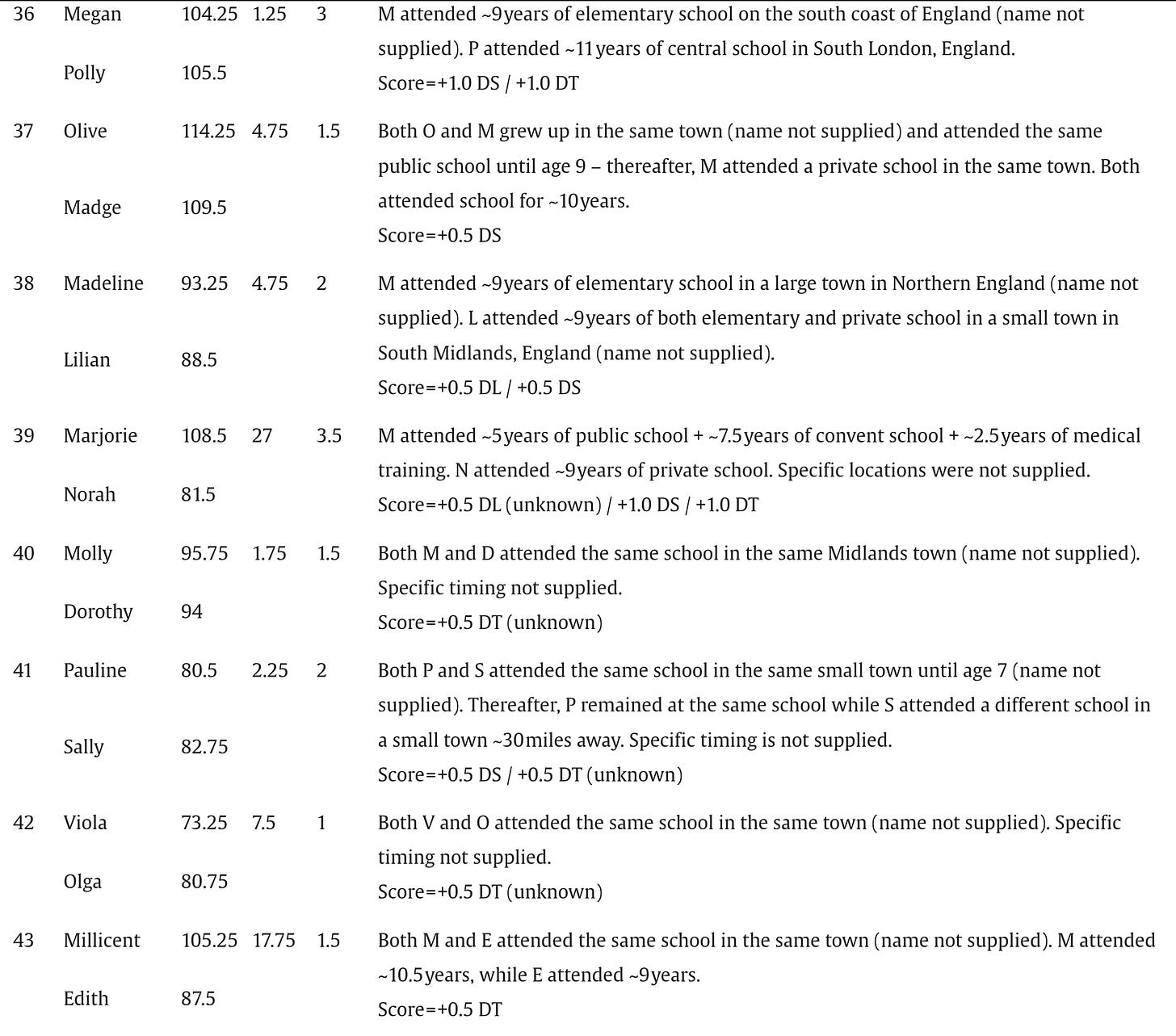
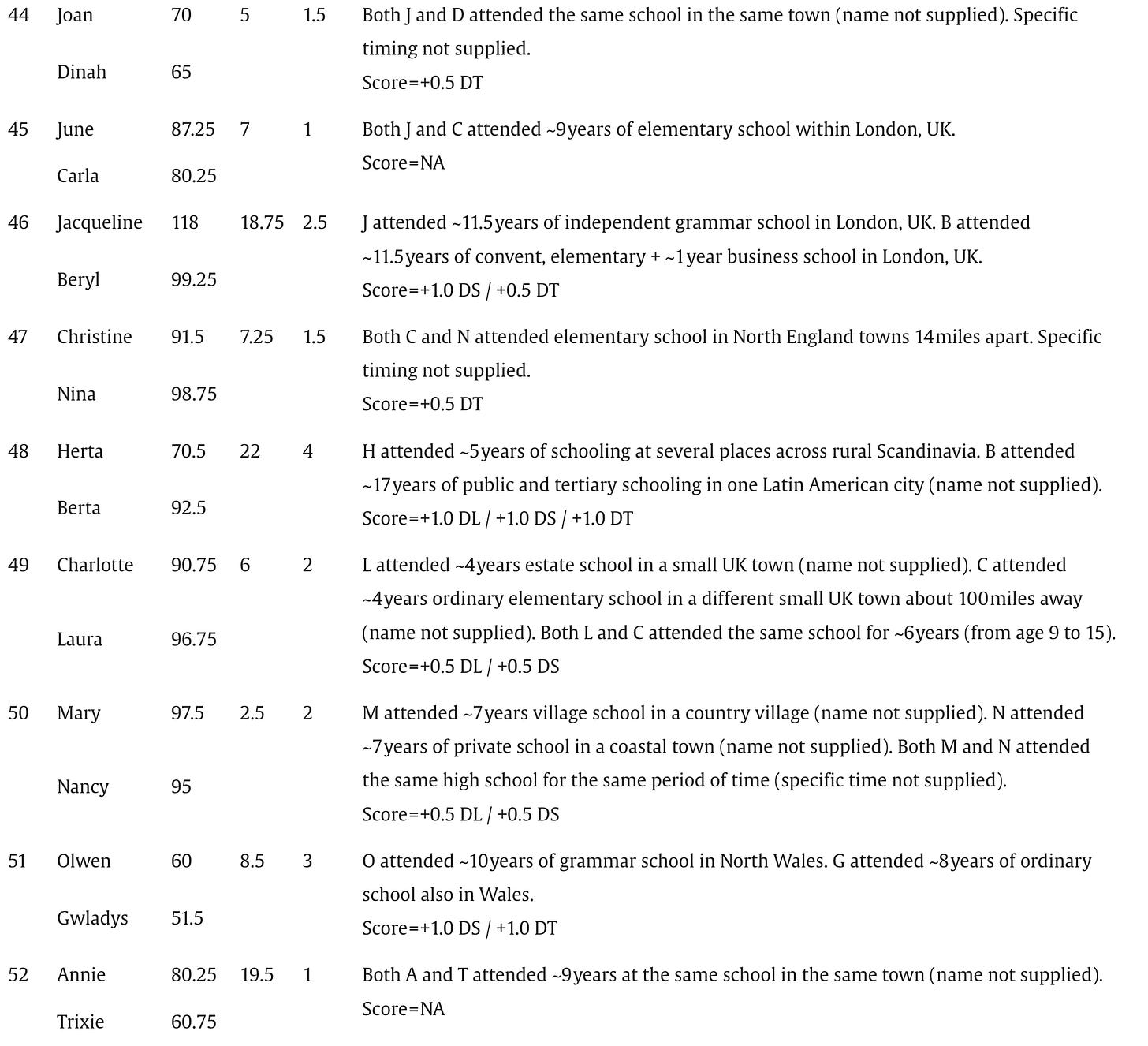
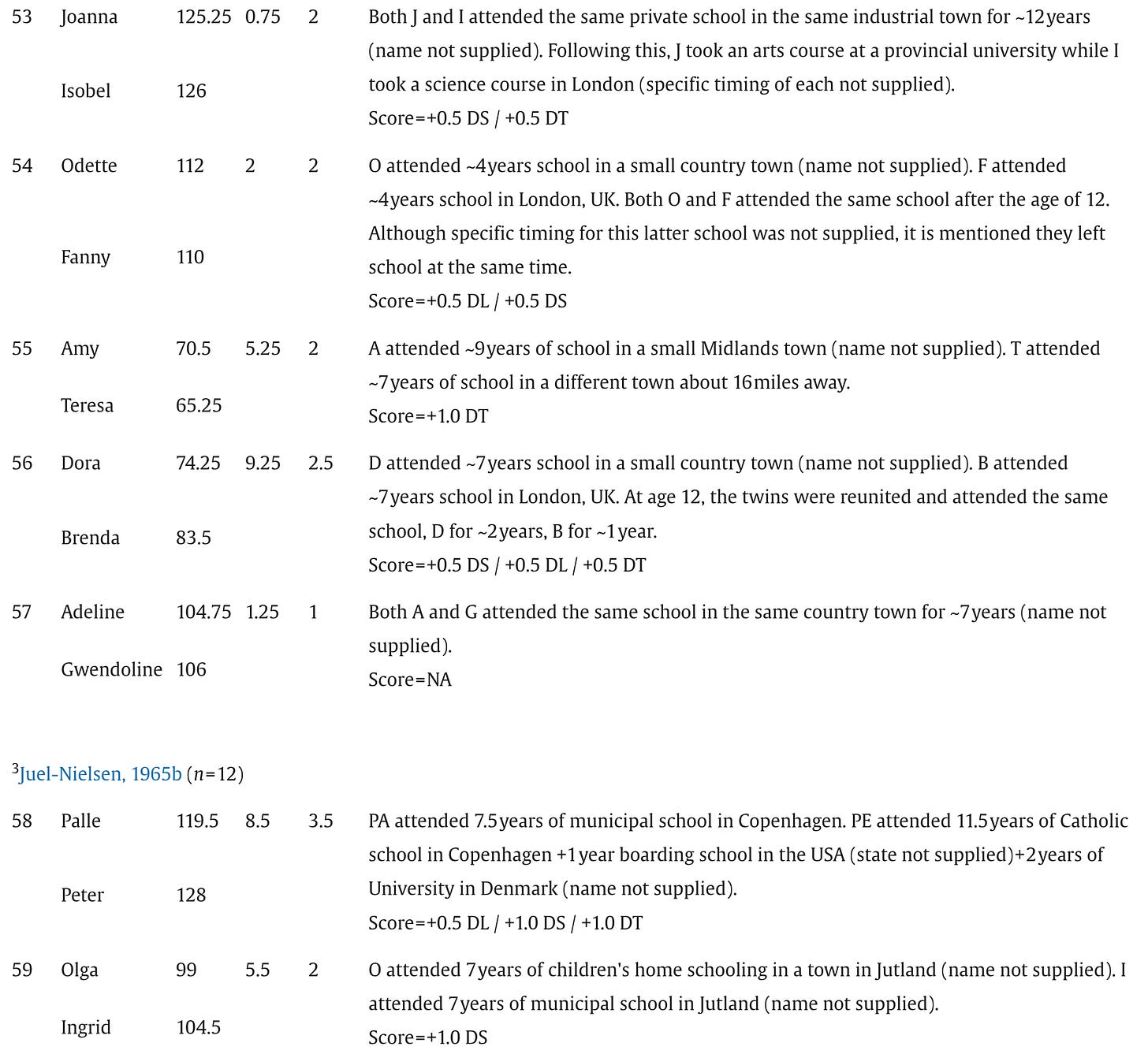
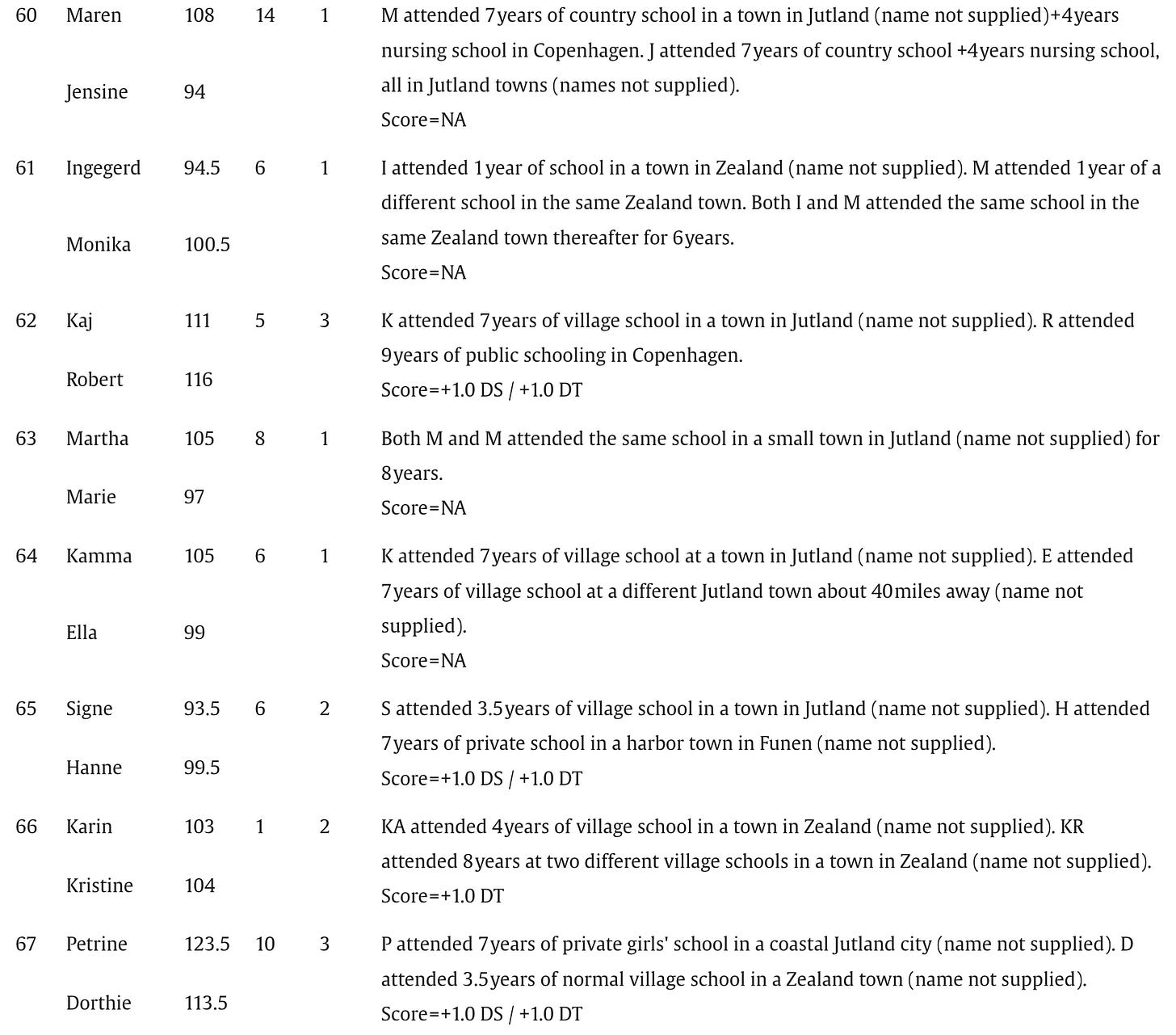
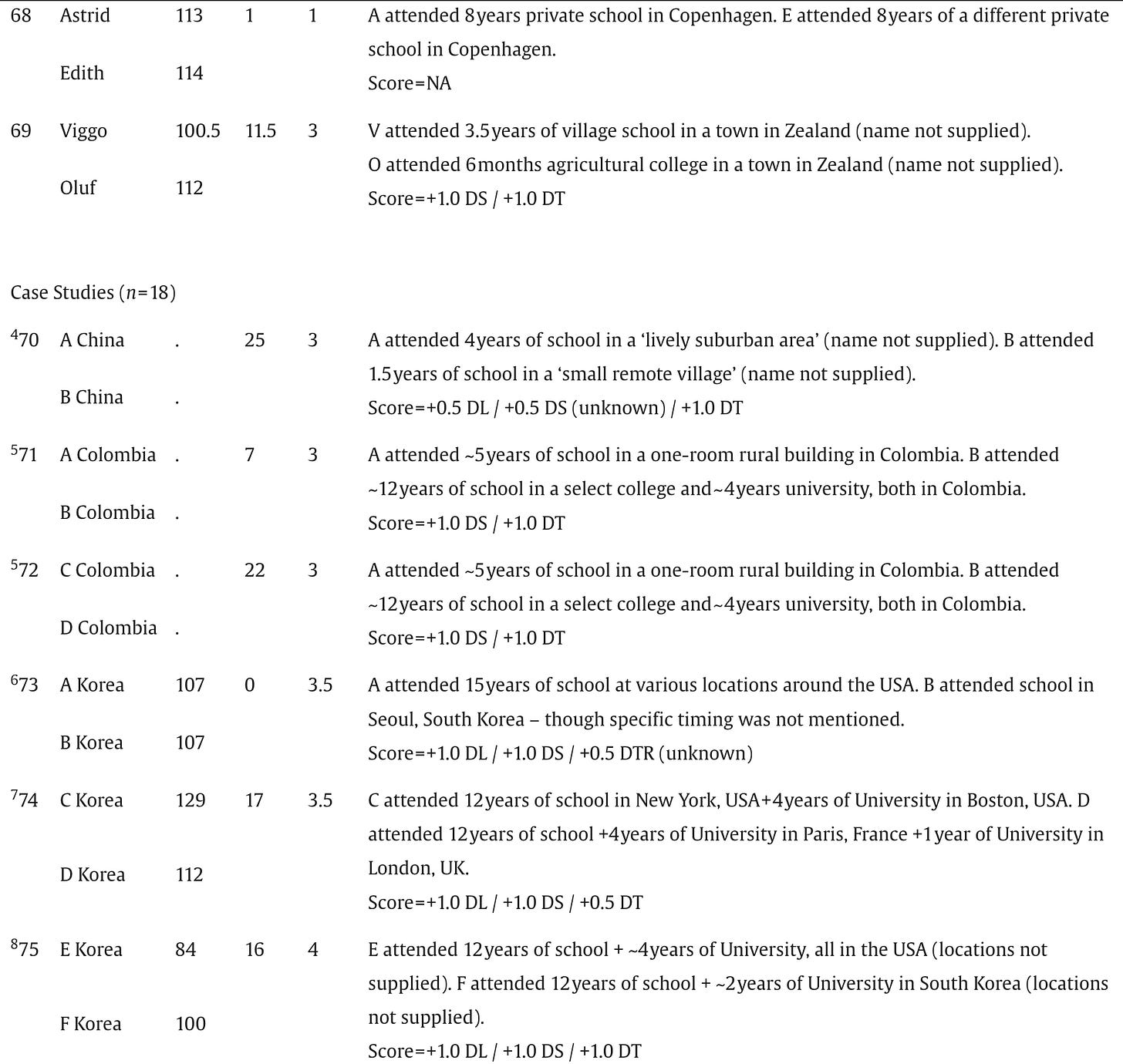
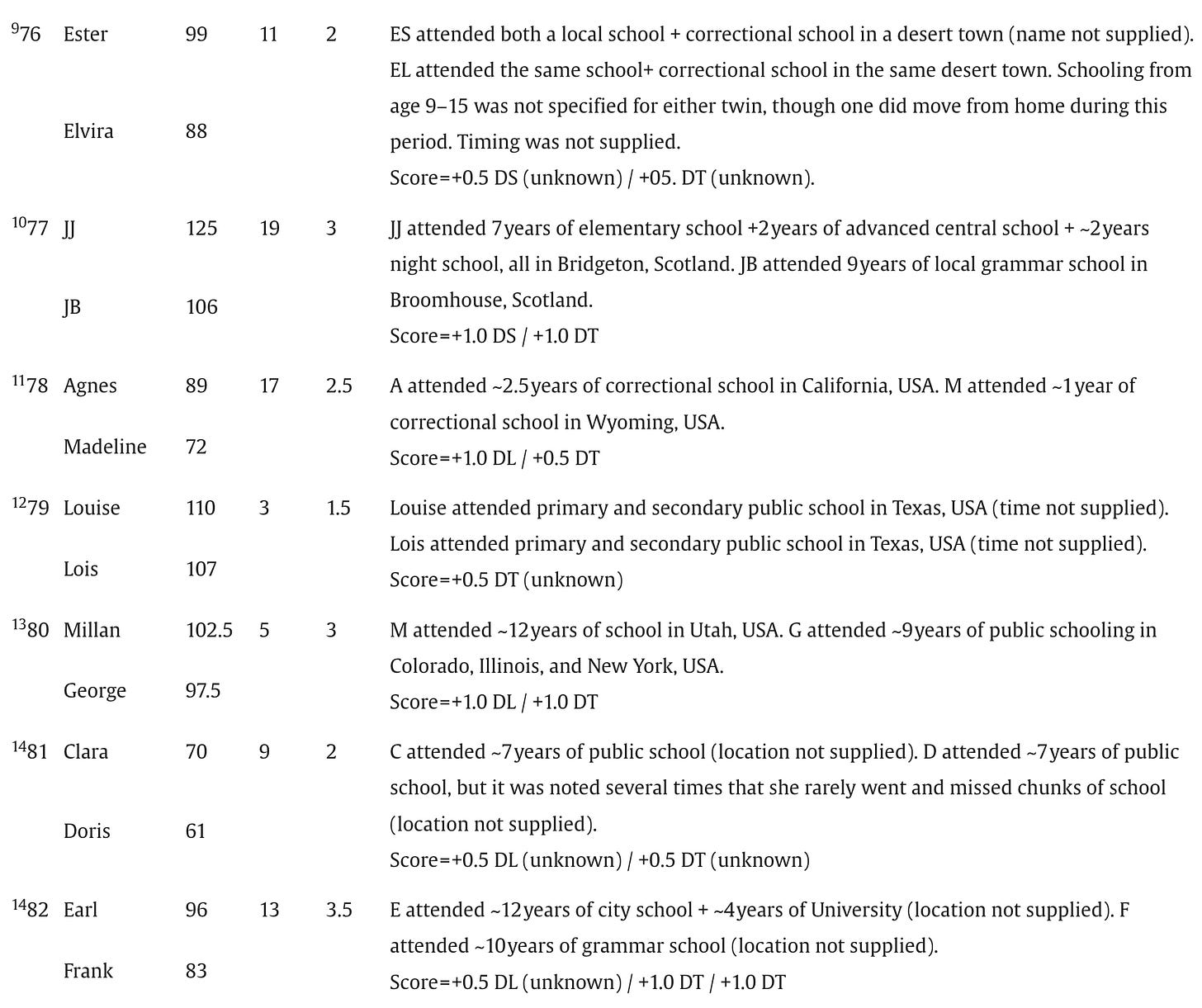
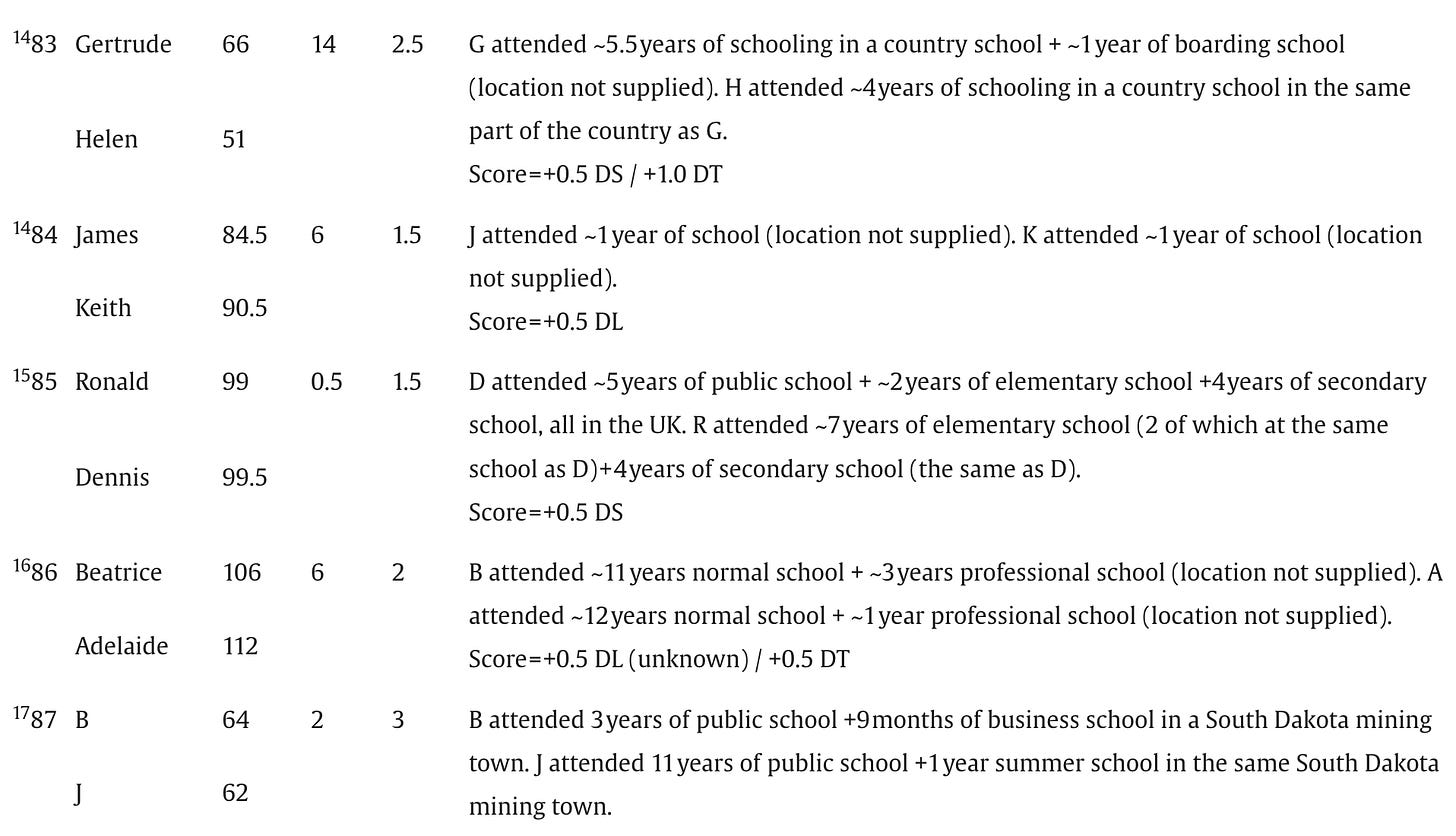
I once travelled across the US with three friends, two of whom were identical twins. We often encountered the problem of deadlock, because the twins would always vote en bloc for a particular activity. My strong conclusion after four weeks in a car with these two is that they were essentially one person spread across two, non-contiguous bodies. If I’m honest, it was more than a little creepy.
The well publicized story of the Colombian twins is fascinating. I believe what happen is they were born on different days but one of the country twins was very sick and a relative (not mother) took him to the city hospital where he got switched with one of the new born city twins. The country relative didn’t really know the baby well enough to recognize the switch ( or maybe another relative picked the newborn up). In any event, that’s closer to the way they were switched. There is a fascinating bioptic on the whole story. I think the accountant got the best end of the deal (I’m guessing he got the 22 pt advantage- far better than his butcher twin. The city twin raised in the country has since become a lawyer - good genes prevailed); it does highlight the value of nurture.